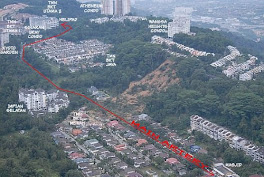 A few days ago, I bought the book “Ecodesign – A Manual for Ecological Design” written by Malaysian architect extraordinaire, Dr. Ken Yeang. Dr. Yeang’s approach on architecture that he is known for is very much reflected in this book. Since I have yet to really go through the whole book, I’ll give you excerpts from the book (first 30 pages) that caught my eye and brain.
A few days ago, I bought the book “Ecodesign – A Manual for Ecological Design” written by Malaysian architect extraordinaire, Dr. Ken Yeang. Dr. Yeang’s approach on architecture that he is known for is very much reflected in this book. Since I have yet to really go through the whole book, I’ll give you excerpts from the book (first 30 pages) that caught my eye and brain.“Humans are a polluting species in nature. In fact, of all the species in nature, humans are the most polluting.”
“...., humans have now begun to behave like ‘dogs as careless defecators’. They have strewn their faeces and other rubbish and debris carelessly about the landscape.”
“Many designers wrongly believe that if they stuff a building with enough ecogadgets such as solar collectors, wind generators, photovoltaic and biodigestors then they will instantly have an ecological design. Of course, nothing could be further from the truth.”
“...., ecodesign is the seamless benign environmental integration of all our human-made environment and all our human activities with the natural environment, from the source to production to operation to demolition and eventual assimilation into the ecosystems and biospheric processes.”
“In the case of built structures (architecture, structures of any sort and infrastructures) ecodesign considerations include not just the design of the entire built systems but also what happens during their manufacture, transportation and construction through to their eventual reuse, recycling and reintegration.”
The book is not the typical architectural books that we architects are used to, you know the kind with a lot of pretty pictures, details, plans and sections of buildings, built and un-built. To me it brought me back down memory lane during my A-Levels. This book is as thick as our Physics text book. This Ecodesign book is 500 pages thick, soft covered, high quality print text book for designers (read anyone whose activities impinge in one way or another on the natural environment).





No comments:
Post a Comment